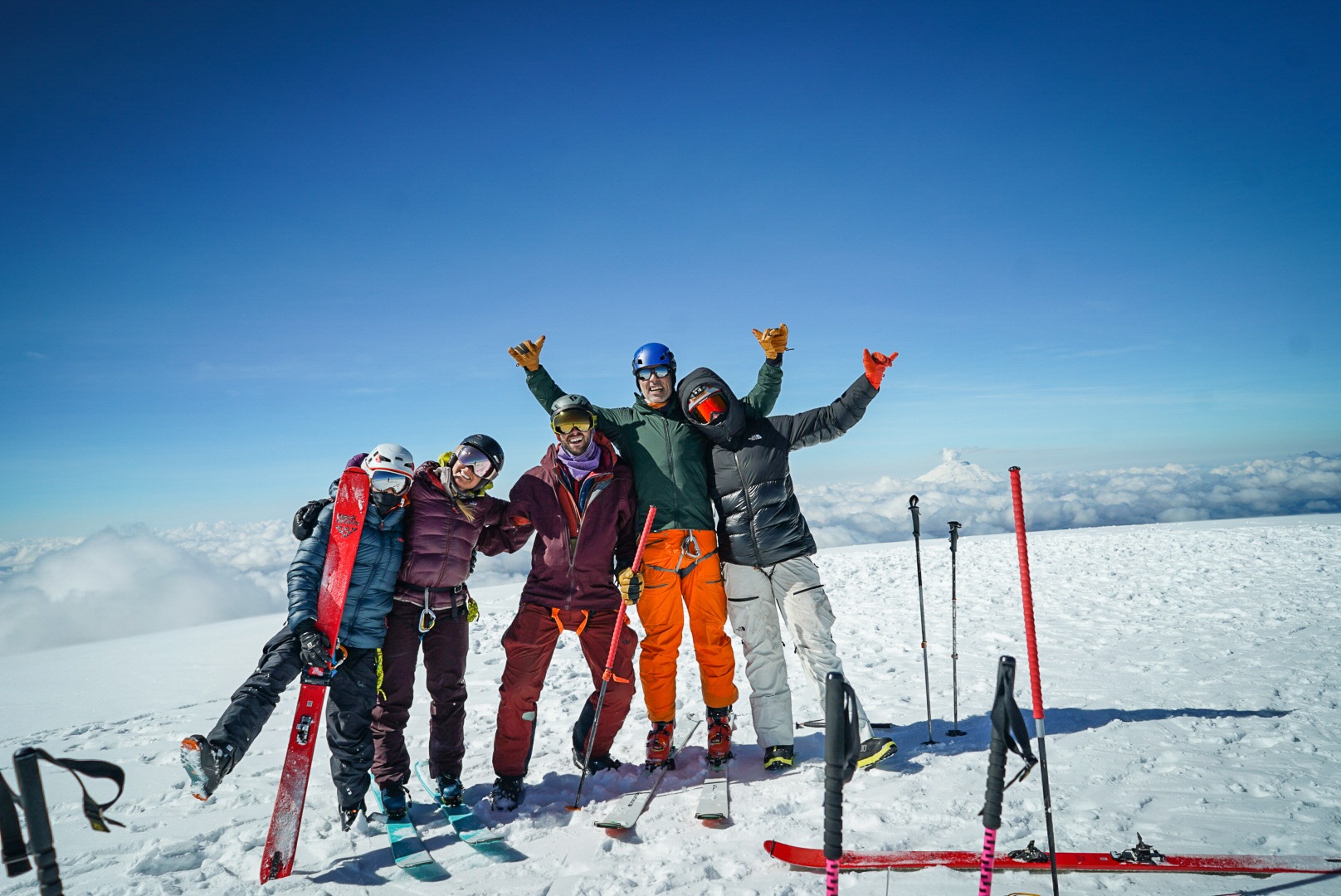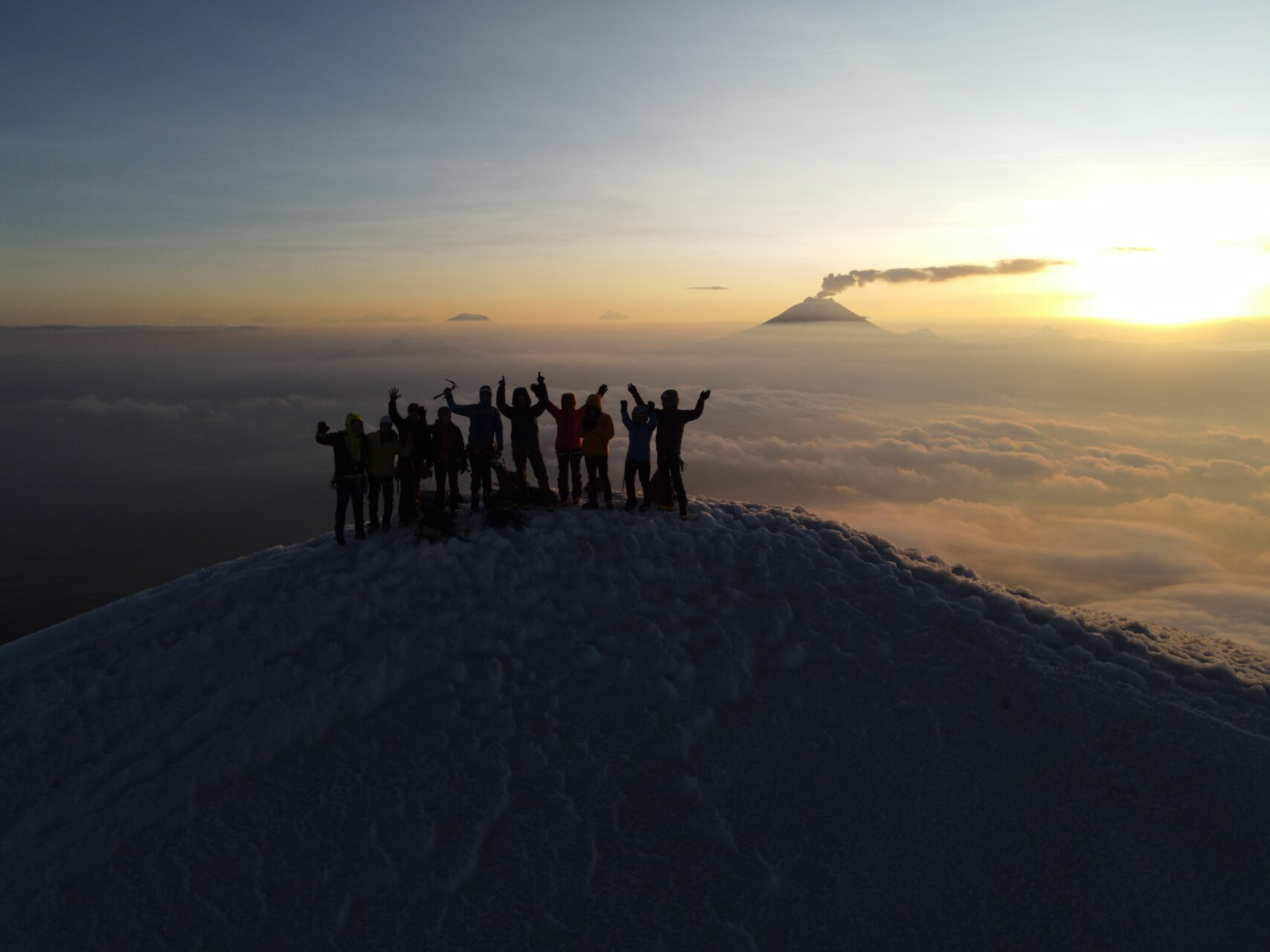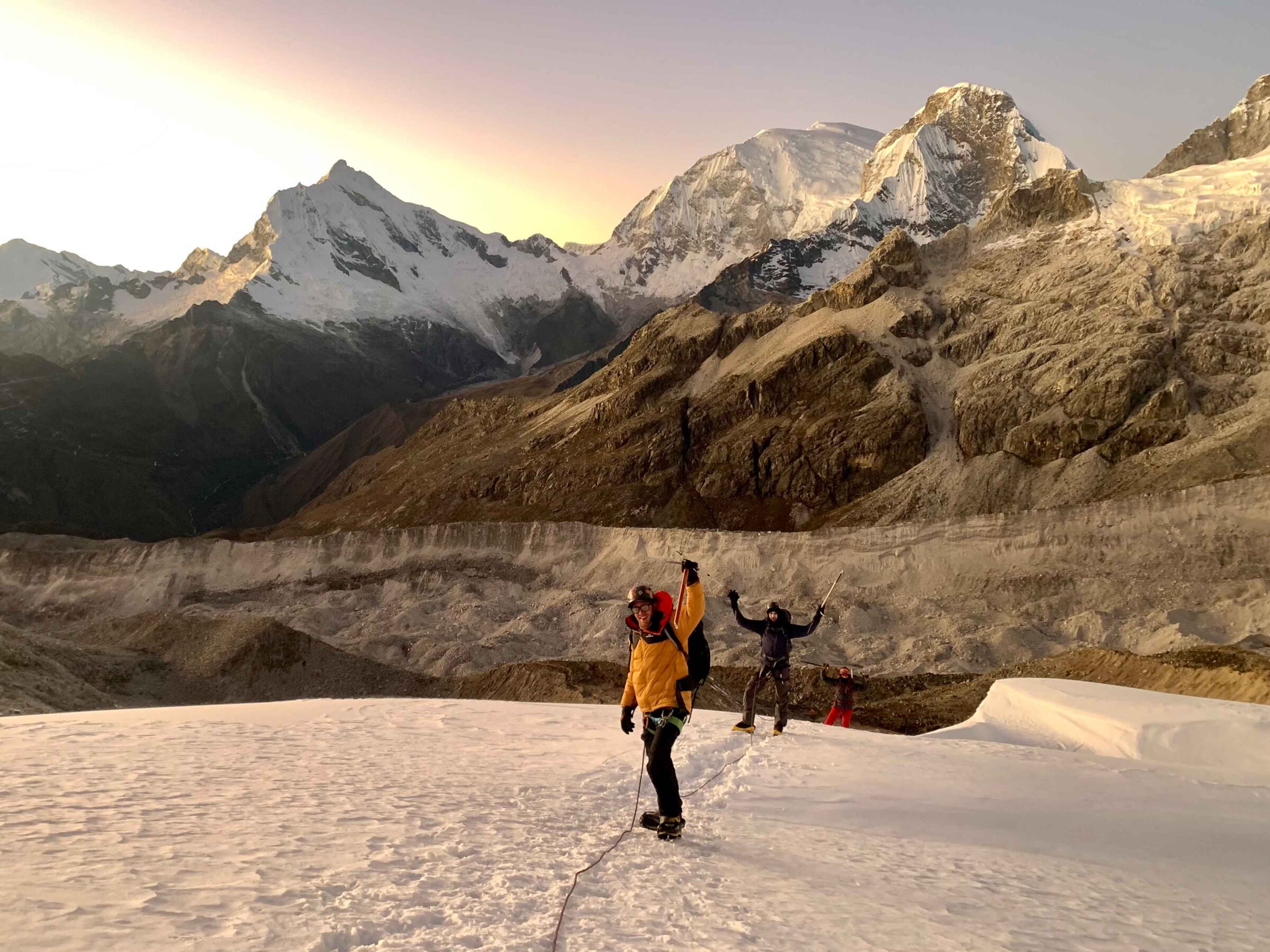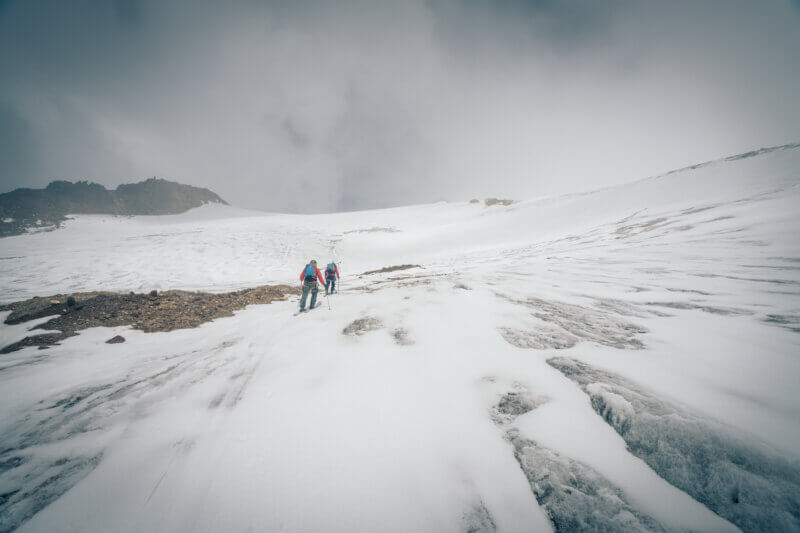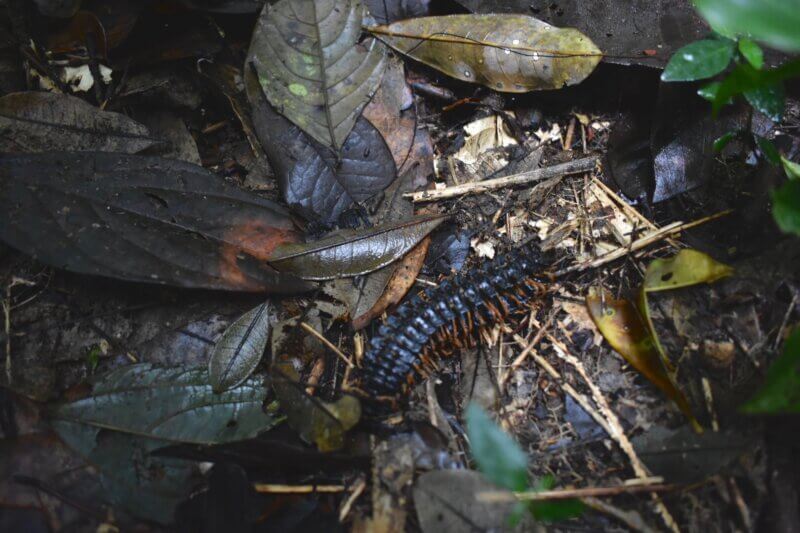Quiet Rage and the Limits of Mountains
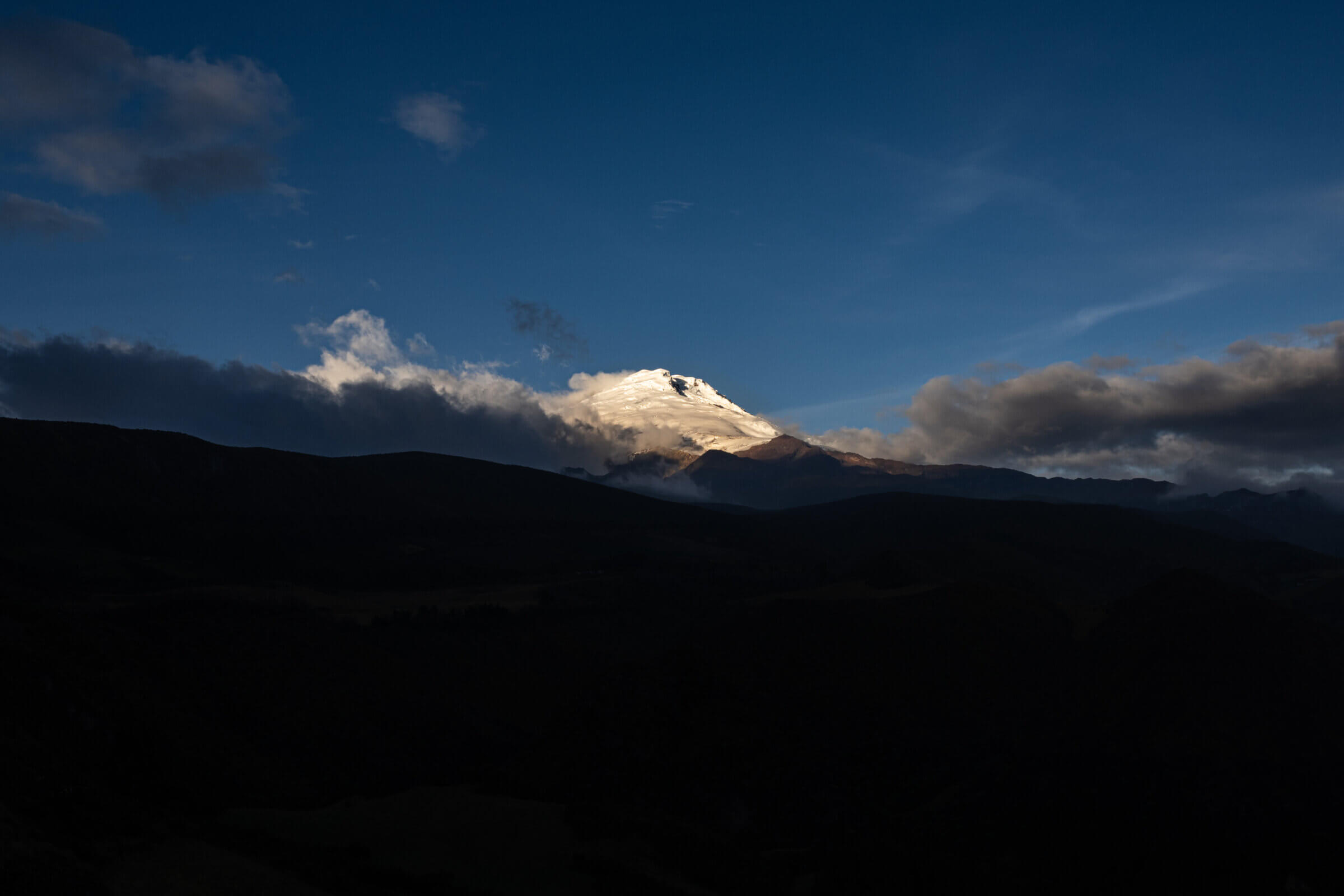
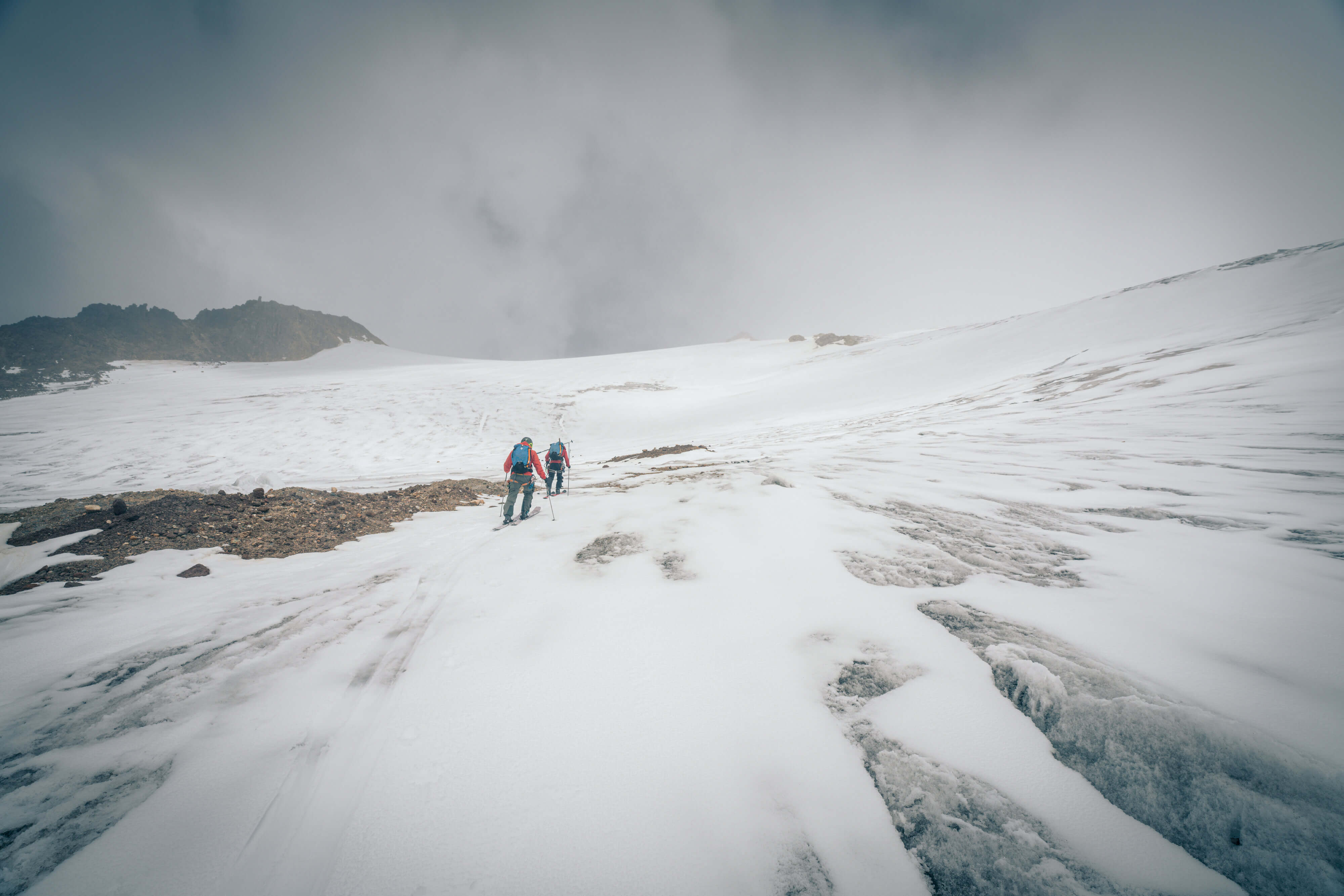
Four hours passed before the sun began to rise at 17,000 feet, and I tried to make peace with what felt like a boa constrictor coiled around my head. With cold, stiff fingers I dug out a frozen protein bar, inhaled deeply, and crammed half of it into my mouth. Despite the persistent lurches of a stomach eager to empty itself, I knew I needed the calories.
Below, the toe of the glacier was lost in a thick cloud that had formed a crust over my shell during the 90 minutes we’d spent skinning up from the edge of the moraine. The moisture that did not freeze pooled in the hoods of my three jackets, and every movement sent rivulets cascading down my arms and off the ends of my cuffs. Chilly predawn winds blew from the east. Around 2,200 vertical feet above the snowy bench where we sat loomed the true summit of Cayambe, Ecuador’s third-tallest peak at 18,996’/5,790m.
“How are we doing? Like, where are we out of ten?,” Sam, our guide, asked once we’d started moving again. I’m sure he had a fair guess at how I might answer. Around 1:30 that morning, he’d given me one Motrin and half a dose of Diamox after I woke from a few hours of fitful sleep with a splitting headache and no appetite
“6.5 out of ten,” I stretched. “Definitely feeling it. I can keep going.”
We set off toward the next bench a thousand feet up. The squeak of muddy pin bindings, the sschhhht of skins gliding up the track, the soft punch of poles in firm snow, and rhythmic, labored breathing scored our ascent. The rest of the team continued ahead more quickly, the distance growing between us. Every step felt like a greater effort than the last, and the landscape’s scale and uniformity made it feel like I was on a treadmill more so than climbing a mountain.
I thought about how thick the air would feel down at 15,000 feet, how warm the hut would be. Continuing up would mean thinner air, colder temps, and no relief from the ceaseless pounding in my head. But turning around could mean teeth-chattering, skull-rattling skiing through the dark, and the quiet, lingering disappointment of not having summited. Two voices warred within me, and either way, I was losing.
In 2018, I came here not as a climber, but as a student with no experience in the mountains and no intent to gain any. A last-minute, on-a-whim ascent of Cotopaxi (19,347 ft/5,897m) changed that, and I’ve spent the years since working to forge a viable career in the outdoor industry. Returning to Ecuador as a member of the Alpenglow Expeditions team was a tangible indicator that this plan might actually be working.
Amid the pride and satisfaction I felt to be here in Ecuador with Alpenglow, I also felt substantial pressure to perform and capitalize on the opportunity before me as a climber and photojournalist. But with a persistent comedown headache following after our acclimation lap up to 17,000 feet had me subconsciously questioning my mettle. The next day, I woke up on summit day in a depressive episode, on the verge of a panic attack. I didn’t understand how I could feel this way, so close to the most tangible realization thus far of everything I’d worked so hard for. I was discouraged. I was angry. And I was verging on a panic attack.
The emotions left me feeling detached and apathetic about the climb. As Sam would soon be the one on the other end of my rope, I was obligated to let him know what happened.
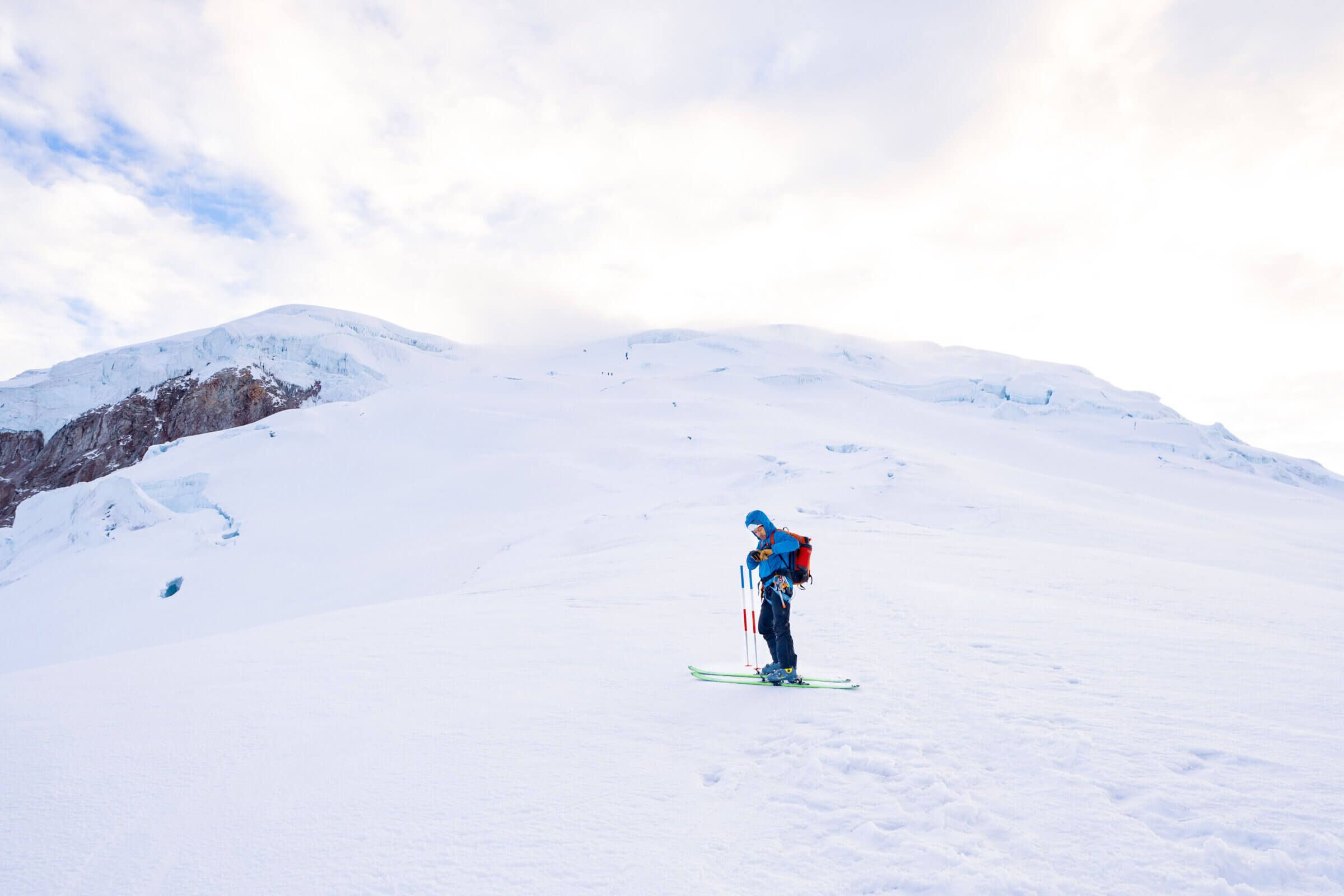
“These big places,” he said, looking up toward Cayambe, “they can bring out big emotions, and they’re not always the good ones. You should think about asking Adrian [Ballinger] about it. There have definitely been times where he’s in the mountains and he’s going through it. Ask any of the guides. You’re not alone.”
The following hours slid by in dreams of blue and white, while the world around me fell away. Sifting through my memories to draw on their power, I slipped into a flow state, dragging one heavy boot in front of the other, hearing my ice ax pierce crunchy snow, and feeling the gentle tug of the rope against my harness. Occasionally I would remember to look around, noticing that the frozen landscape grew increasingly grotesque, malevolent, and otherworldly the higher we climbed. Then I’d look up the slope, pick some nondescript landmark, and say to myself, If I can just reach that heap of snow…
This is the unglamorous portion of high-altitude mountaineering that climbers who document their ascents often romanticize or gloss over completely for the sake of a more compelling narrative. But in truth, much of the time spent trudging toward the world’s higher reaches passes in this way. And while more technical and hazardous mountains present their own potent strain of suffering, the challenge of climbing non-technical peaks such as Cayambe rests in their inescapable monotony. It is a slow, passive form of torture made worse by the knowledge that it is, by all means, self-inflicted.
As I wove my way around gaping crevasses, I thought of my family, and how badly I wanted to be able to make them proud, to tell them that I’d descended safely after reaching the summit. Fueled by all of the experiences that led me here, I looked inward and drew vitality from times of gratitude, joy, and friendship, as well as from heartache, grief, and loss. I let my body become a machine that converted emotion, any emotion, into fuel for the next step forward.
Traversing alongside a wide crevasse a few hundred feet below the summit, I peered down to see if I could locate the bottom. All I saw were white walls sinking into deeper and deeper blues, finally melting into an inky black. On a small flat above us, a stonehenge of skis indicated that the rest of the team were above us, making the final push to the top. Adding my skis to the circle, I heard Sam yell something that sounded like “two hundred more feet,” but in truth I didn’t know what he said, nor did I ask him to repeat it. The big mountains offer us a unique opportunity to take a hard look at what we’re truly made of, and I aimed to find out. Two hundred feet or two thousand, I was overwhelmed by a clarity of purpose, and had long since resolved to keep at it until my legs or lungs gave out.
Protected by a handful of blue-mawed crevasses, the summit plateau of Cayambe curves softly upward until leveling out to a nearly-flat expanse of perhaps half a football field. In the middle is a hump of snow and ice, perhaps 20 or 30 feet tall, which is the true summit of the volcano. From the edge of this field I could just make out the flickering colors of the team clambering down from the top.
“Drop your pack here,” said Sam, 20 yards from the final slope. “Let’s do it.”
Like a zealot I plodded toward the high frozen altar. Cresting the last ridge with no place higher to go, I fell to my knees. On all fours, black gloves pressed into the snow, with quivering limbs upholding a body that hardly felt like my own. A wave of relief washed over me, and all was silent but the wind. I felt both more exhausted and more alive than I suspect I ever had. A strange heat filled the space between my eyes and foggy lenses, my breaths were stuttered and uneven, and I realized I was sobbing. I rolled onto my back and let the tears flow, cracked lips spread into a wide grin as I gazed into the blurry blue.
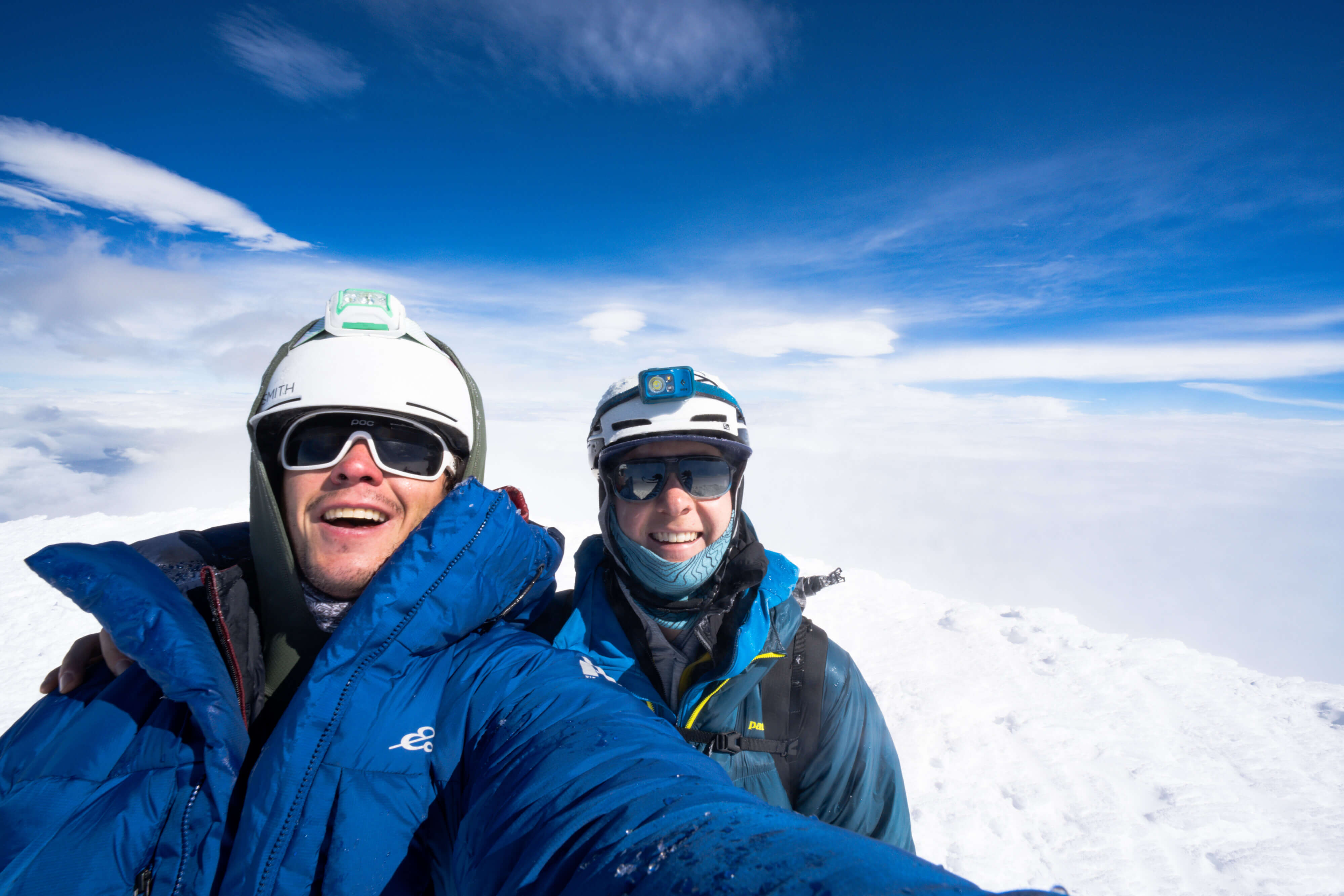
There are experiences in life that lead to fundamental changes in who we are and how we view ourselves. It isn’t often we see them coming, or even realize it when we’re in them, but we hopefully recognize them when we come out the other side. My experience on Cayambe was one of them.
When I first heard the term ‘rage’ tossed around in the climbing world, I understood it to mean something like power-screaming at the crag in a show of anger, strength, and survival instinct. It was something loud, flashy, ostentatious, and suggested a sense of urgency and immediacy needed to pull through a hard move. Cayambe taught me that rage can be quiet. It can be slow, patient, deliberate and, when carefully tended, used to access a flow state. Rage, in this sense, is simply a way of referring to what we may otherwise call the vitality of the human spirit, a harnessing of all the experiences and emotions that make us who we are, and the notion that they can be a source of infinite energy.
Overall, I am left with a prevailing sense of gratitude. Cayambe forced me to shift my thinking from “I’m in the big mountains, I should feel happy,” to more intimately understanding what the mountains can and can’t do for me, and accepting that adventure is not a universal antidote. It forced me to reevaluate my relationship with extremes, and see that the reason I seek them is not to find happiness, but clarity. After weeks of reflection, I’ve determined that while the mountains may not directly offer the help I need to take control of my mental health, I see more lucidly than ever that I owe it to myself to keep asking for it.
